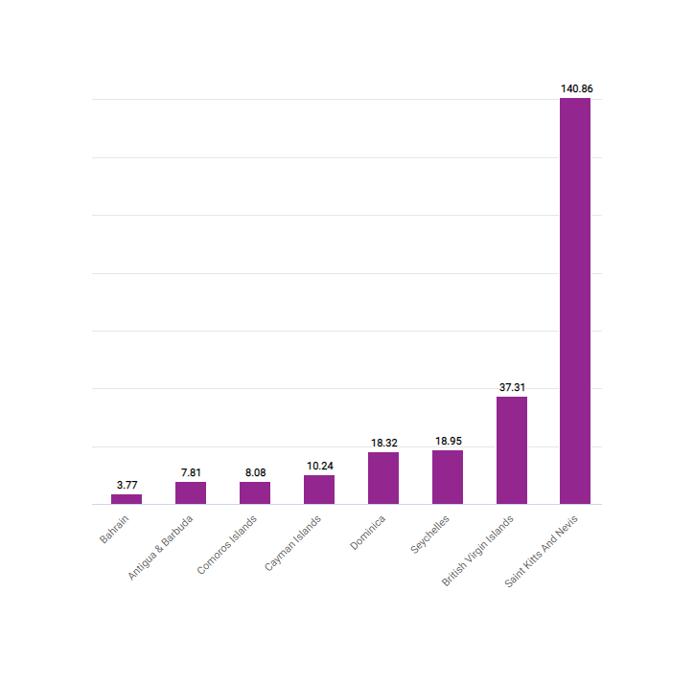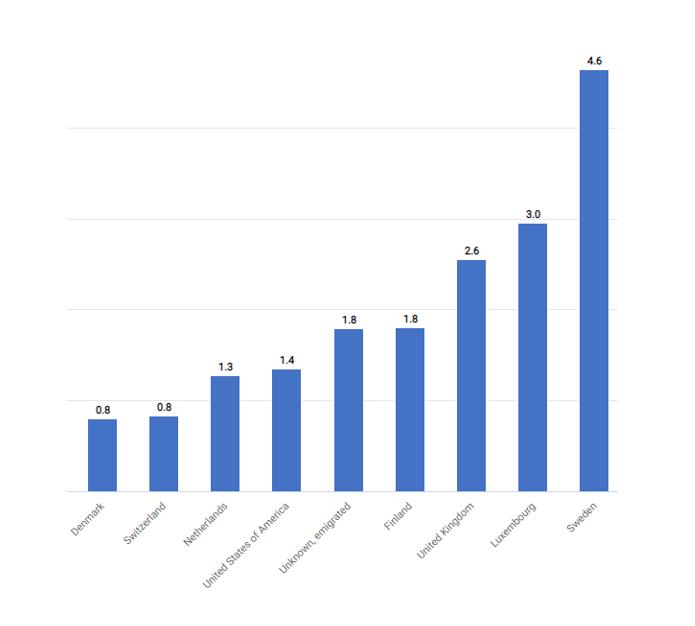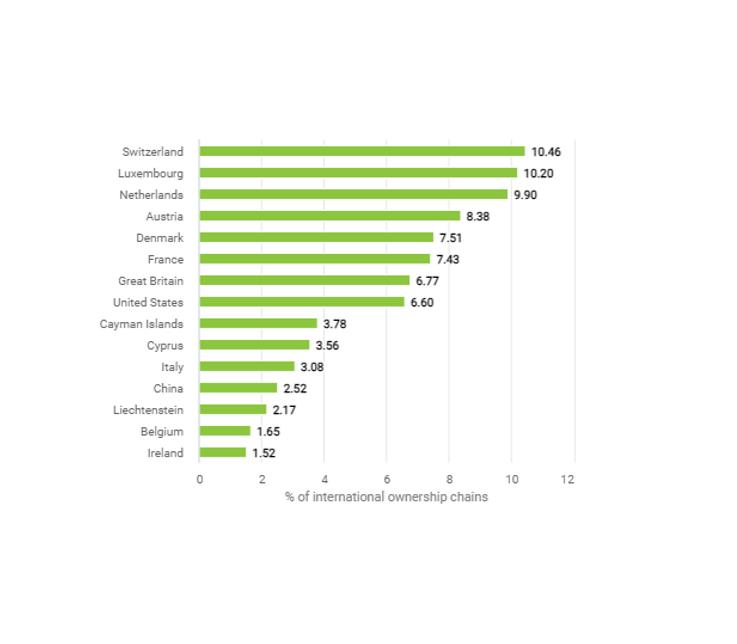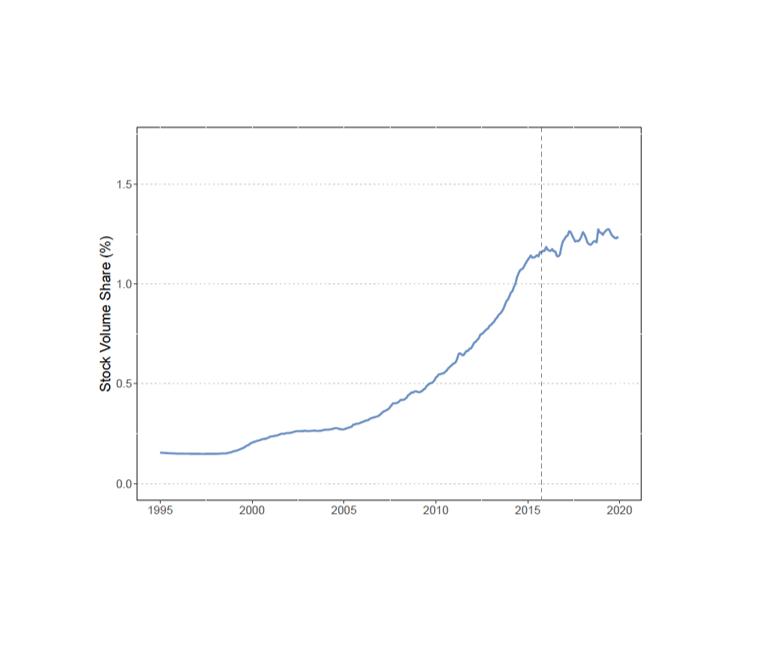Who owns offshore real estate? Evidence from Dubai cross-border real estate investments
Multinationals’ Sales and Profit Shifting in Tax Havens
Multinational enterprises use tax planning strategies to shift profits to low-tax jurisdictions, thereby reducing their global tax payments. One way is to inflate costs in high-tax countries through deductible payments such as interest or royalties. Another less researched channel, highlighted by Lafitte and Toubal, is sales shifting. Sales shifting implies that multinational enterprises report sales in low-tax jurisdictions while their goods and services are physically sold in other countries.
The authors use the statistics of the Bureau of Economic Analysis (BEA) on the foreign affiliates of US multinational enterprises from 1999-2013. For each host country, sector and year, the BEA data allow to split the reported sales of goods or services between sales to the host country, the US and any other country. Using this split, the authors compute the “foreign sales ratio”, which is the ratio of foreign sales to the total sales reported in the host country.
Their analysis reveals the foreign sales ratio of US multinational enterprises’ affiliates differ significantly across sectors and host countries. Typically, the foreign sales ratio is much higher in tax haven countries (24%) than in non-haven countries (24%). The authors show that sales and exports (i.e. financial transactions and the actual flows of goods and services) are strongly disconnected, which suggests that the use of sales platforms and contract manufacturing by US multinational companies might be tax-motivated.
The econometric analysis confirms that the foreign sales ratio depends on the tax environment of the host country: increasing the corporate tax rate by 1 percent is found to decrease the foreign sales ratio by about 0.57 percentage points on average. The lower the corporate tax rate, the more sales are concentrated in the host country. Based on these findings, the authors estimate that 66 $bn to 85 $bn of profits were shifted to tax havens using sales shifting in 2013.
Key results
- Multinational enterprises use sales platforms to report foreign sales in tax havens without necessarily exporting goods and services from there. As a result, the foreign sales ratio is much higher in tax havens than in non-havens.
- 66 $bn to 85 $bn of profits were shifted to tax havens using sales shifting in 2013.
- Sales shifting explains 88%, 72% or 71% of the profits reported by US multinational companies’ affiliates respectively in Bermuda, Ireland or Luxembourg.
Policy implications
Proposals to redistribute international taxing rights according to sales should formulate precisely what type of sales they target as multinational enterprises manipulate the location of sales. The lack of data on the destination of sales (where the final user or consumer of the good or service is located) makes it difficult to simulate the revenue implications of destination-based corporate tax rules.
Data
Laffitte and Toubal use the statistics of the Bureau of Economic Analysis (BEA) on the activities of US multinational enterprises. They focus on the activities of their majority-owned foreign affiliates in 56 countries and 11 industries from 1999 to 2013.
Methodology
The authors compute average foreign sales ratios, ratios of sales to exports or ratios of sales to employment and analyse their heterogeneity across sectors and host countries. The “foreign sales ratio”, is the ratio of foreign sales to the total sales reported in the host country. For example, in 2018, the Italy-based affiliates of US multinational companies in chemical industries registered 14.5 $bn of sales, 9.4 $bn of which were directed to the host country, 0.8 $bn to the US and 4.3 $bn to other countries: this corresponds to a foreign sales ratio of (4.3 + 0.8) / 14.5 = 35%.
For their econometric analysis, the authors use fractional logit regressions and traditional linear regressions with different specifications to identify the causal effect of the host country’s tax environment on the foreign sales ratio.
To quantify the scale of profit shifting and compare it to other profit shifting estimates in the literature, they regress firms’ profits on the interaction of the tax haven status of the host country and its foreign sales ratio, as well as a number of control variables. Setting the corresponding coefficient to 0, they can predict the amount of profits observed in the absence of sales shifting to tax havens and approximate the scale of the phenomenon.
Go to the original article
This article was published in the American Economic Journal: Economic Policy 14(4) in 2022.
Go to the journal’s website
An older working paper version can be downloaded from repec ideas.
This might also interest you
Hidden in plain sight: Offshore ownership of Norwegian real estate
The role of anonymous property owners in the German real estate market: First results of a systematic data analysis
Homes incorporated: Offshore ownership of real estate in the U.K.



